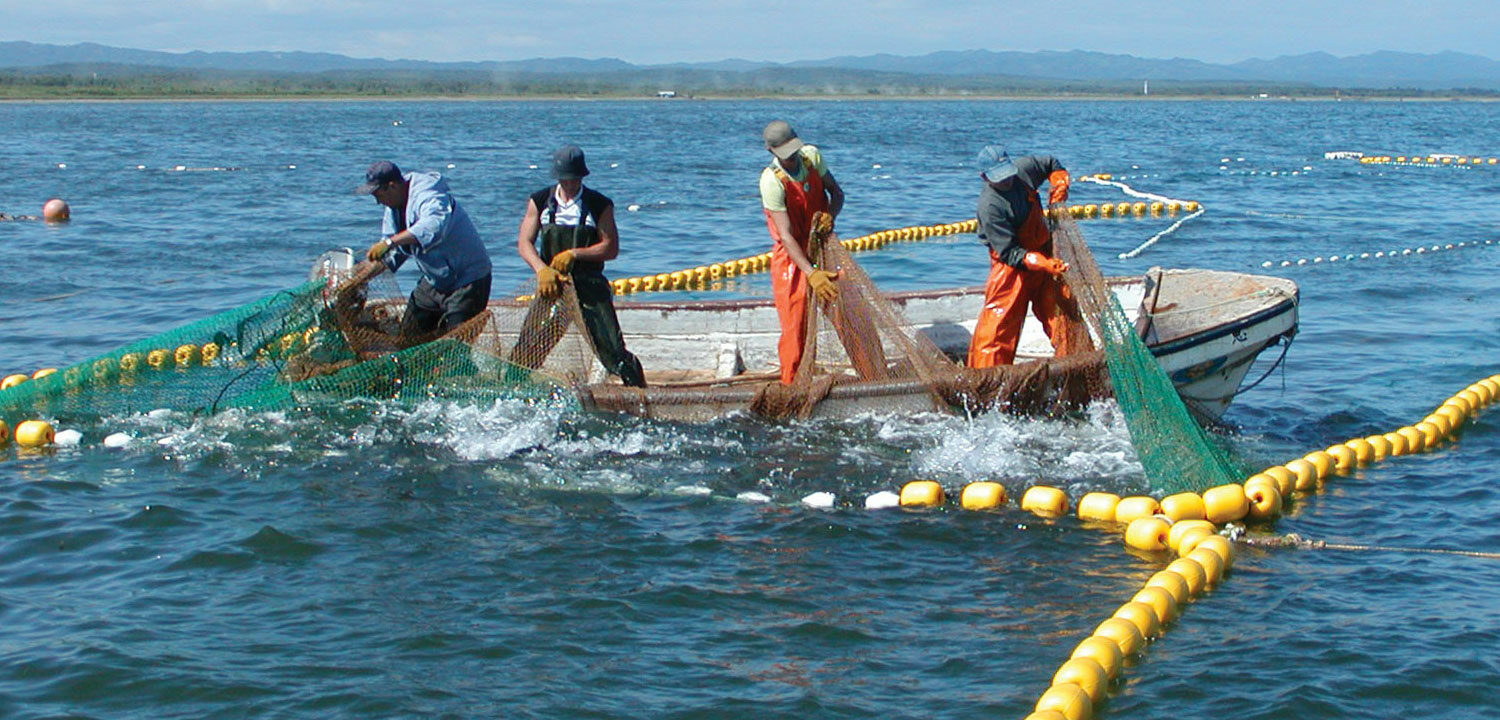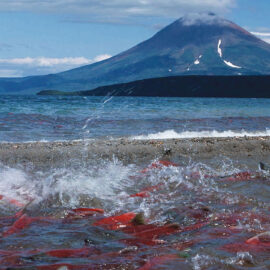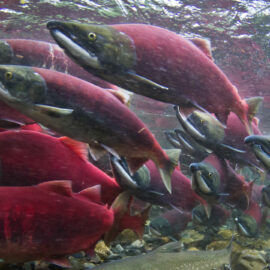Update from our partners at Ocean Outcomes: Long-term work with Russian government is paying off with more than 60% of all hatchery pink and chum salmon now marked before being released in the wild.
As the source of 40% of global wild salmon production, the Russian Far East hosts some of the most prolific salmon runs on the planet.
This year, salmon runs and fisheries are flourishing on the Kamchatka Peninsula.
But Sakhalin Island is now in the midst of its sixth year of low salmon returns, according to data from the North Pacific Anadromous Fish Commission. Sakhalin fishermen have only been able to harvest 28,600 metric tons of pink salmon so far this year.
While it’s difficult to pinpoint the reasons for declining returns, poaching and oil and gas development are the two most commonly cited causes.
Russia, like many parts of the salmon world, has turned to hatcheries as a way to boost depressed salmon runs. Russian authorities rapidly expanded hatchery releases from 573.8 million pink and chum juveniles in 2000 to 904.4 million juveniles in 2010, roughly a 40 percent increase over 10 years. Hatchery production of chum and pink salmon in the Russian Far East is primarily concentrated on Sakhalin Island and Iturup, on the Kuril Islands to Sakhalin’s east.
In 2008, while still a program of Wild Salmon Center, the Ocean Outcomes team facilitated a Marine Stewardship Council pre-assessment of the Sakhalin salmon fishery, which shed light on hatcheries practices and the need for changes.
There were already widely distributed and accredited research concerns regarding potential negative interactions between wild and hatchery-raised fish population — for instance: a loss of fitness due to interbreeding, competition for resources, influence on the homing processes of neighboring fish, and spread of disease, all of which can lead to declines in wild salmon populations.
Additionally, many Russian hatcheries were built on the largest and most prominent natural spawning rivers in the region, increasing the potential to impact wild salmon. Furthermore, Russian hatcheries weren’t marking their fish to monitor impacts on wild salmon runs, a recommended best practice.
As hatcheries emerged as the single greatest impediment to Marine Stewardship Council certification for Russian salmon fisheries, reform efforts gained traction among fishermen and fisheries managers. Our team began working with government hatcheries in 2009 to mark otoliths (ear bones) of chum and pink salmon in the Sakhalin and Kuril Islands, and we followed up with otolith analysis of salmon carcasses in the field — the first research program of this kind ever done in the Russian Far East.
Comparing the two sets of ear bones allowed us to estimate the proportion of hatchery fish in fishery catches, escapements upriver, and in hatchery broodstocks used to seed the next generation.
Scientists found that the survival rate of hatchery salmon was significantly lower than their wild counterparts. Meanwhile, fisheries indiscriminately and assuming the mortality rate was equal.
Based on these data, future hatchery development shifted to river systems without strong naturally occurring runs. Local managers turned the focus to producing hatchery chum over pinks for commercial harvests, while leaving wild pink populations to recover with less pressure from competing hatchery fish.
Fast forward to 2016. After eight years of work in the region, government hatcheries now mark an impressive 65% of all pink salmon and 61% of all chum salmon released into the wild.
Moreover, Russian hatchery releases appear to have plateaued, while the United States and Japan continue to release more hatchery fish into the ocean than Russia does. Good hatchery practices are only one piece of the puzzle, but they are vital to ensuring sustainable fisheries. With better practices in place, we’re hopeful Sakhalin runs and commercial fisheries have started the long path to recovery.




